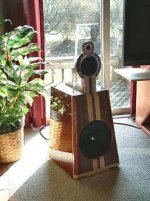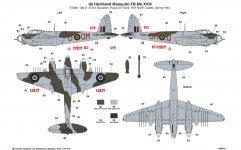Yes, that BBC study. I'm not sure the keenest eye could be sure they understand what they found.
My not very keen eye did notice that those rather similar FR and distortion plots are not speaker outputs. Surprised? Nooooooo. They are figure-8 mic readings of the panels with the mic nulling the driver output so as to emphasize the panel sound from nearly touching the panel.
I am amazed that the panels have such great FR and distortion - and that their various treatment experiments (that nobody can be sure quite what they were doing) made so little difference.
What's so hard about sticking a mic in front of a speaker with and without good bracing or damping and seeing if it makes much difference?
B.
Great to see everybody taking an interest in this old Harbeth thread again.
Alan Shaw is just nuts about speakers. Great cabinets, great drivers, complex computer modelled crossovers. Harbeth was Dudley Harwood's baby originally, and Alan Shaw bought into it.
Whatever he is doing, people pay the big bucks for it, like £4,000 for a two-way and rarely complain.
The Monitor 30.1 is the classic polycone 8" bass plus metal SEAS tweeter. AFAIK, it crosses at an outrageously high 4kHz. That takes an in-house polycone 8" woofer, the Radial II, with no nasty breakups.

TBH, my own enthusiasms are not from a wildly different place:
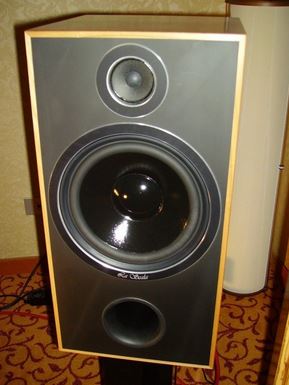
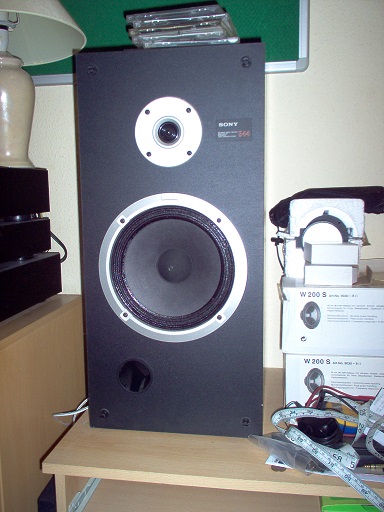
Happen to be made from chipboard or MDF. And, in fact, Harbeth are not averse to MDF or chipboard.
Not many people know this, but the best fighter-bomber of WW2 was the De Havilland Mosquito. Twin Rolls-Royce engines aka "drivers" and marine plywood construction. Sounds unlikely, but there it was.
Light and rigid airframe, albeit with a tendency to crack and shatter if landed heavily. Bit like his big Monitor 40 3-way loudspeaker:
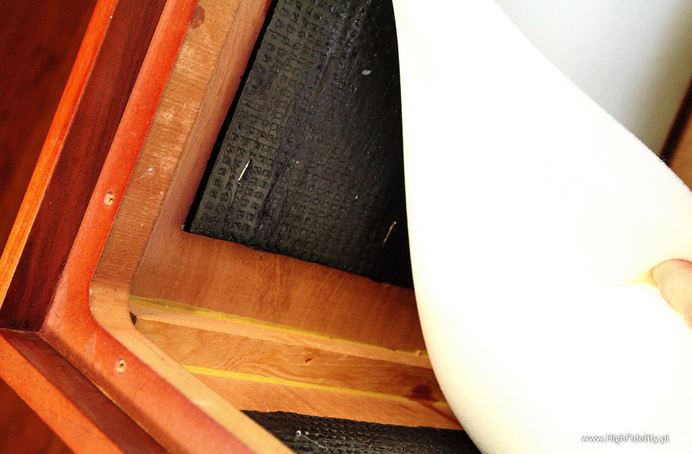
Most everything you need to know about lossy cabinets in one picture. The reason the front baffle is screwed on with a bit of rubber strip damping, rather than glued is the "cracked bell" idea. A cracked bell doesn't ring too well.
Alan Shaw is just nuts about speakers. Great cabinets, great drivers, complex computer modelled crossovers. Harbeth was Dudley Harwood's baby originally, and Alan Shaw bought into it.
Whatever he is doing, people pay the big bucks for it, like £4,000 for a two-way and rarely complain.
The Monitor 30.1 is the classic polycone 8" bass plus metal SEAS tweeter. AFAIK, it crosses at an outrageously high 4kHz. That takes an in-house polycone 8" woofer, the Radial II, with no nasty breakups.
TBH, my own enthusiasms are not from a wildly different place:
Happen to be made from chipboard or MDF. And, in fact, Harbeth are not averse to MDF or chipboard.
Not many people know this, but the best fighter-bomber of WW2 was the De Havilland Mosquito. Twin Rolls-Royce engines aka "drivers" and marine plywood construction. Sounds unlikely, but there it was.
Light and rigid airframe, albeit with a tendency to crack and shatter if landed heavily. Bit like his big Monitor 40 3-way loudspeaker:
Most everything you need to know about lossy cabinets in one picture. The reason the front baffle is screwed on with a bit of rubber strip damping, rather than glued is the "cracked bell" idea. A cracked bell doesn't ring too well.
Last edited:
Talking about measuring enclosure vibration, then bringing up your bass speaker?In 60 years of knocking my knuckles on every cab I met, I can't recall seeing measurements on the subject of enclosure vibration. Perhaps just my memory.
I believe all the heavy-duty opinions in this thread should await somebody showing the evidence one way or the other. Seems like a trivial experiment to measure a cab without bracing and then add the bracing.
The evidence must be out there, eh. Can't anybody post links?
BTW, used quarter-inch plywood on my 17-foot 12 Hz labyrinth. The cab does vibrate. So do the walls in my room.
B.
Cabinet stiffness helps bass response but enclosure vibrations are a higher frequency/midrange problem. People have indeed spent a *lot* of time measuring enclosure panel resonances both objectively, and, in listening tests comparing cabinet "A" to "B" to look for audible subjective differences.
Whether you like "A" or "B" better is significant and important, but, must be done in blind testing for valid results. Harmon Audio Group has an awesome speaker listening test setup.
....People have indeed spent a *lot* of time measuring enclosure panel resonances both objectively, and, in listening tests comparing cabinet "A" to "B" to look for audible subjective differences
Spare us the sermon, just show the data*.
B.
* not the data on how the walls shake something awful, but the data on the speaker sound. Shaking might matter a lot, a little, or hardly at all... let's see the data.
Last edited:
I don't know what the heck I am talking about sometimes, but as an engineer I think that light and rigid is cheaper than heavy and floppy in responsiveness...
Consider plywood's practical application, not only to speaker cabinets, or WW2 fighter-bombers. I'd always trust beautiful aesthetics to the Italians. They grow up with this stuff all around them.
Not many people know this, but the best speedboat in the World is the Italian Riva Aquarama. Built of plywood with all the crossbracing that boats need when buffeted by waves. Twin Lamborghini engines, the aquatic equivalent of Scanspeak. A thing of great beauty.
Perhaps there are two schools of thought on this. Maybe Carbon-fibre is a good modern light and rigid material for the outer frame. Maybe nature has evolved near-perfect wood for its trees which must survive heavy stress in windy winters. See, wood must bend, wood must be strong.
I do notice that a "Retro" Stealth Bomber might as well be made of plywood. But, TBH, I can't design a wooden engine to keep it off the radar screen...
Maybe the Lamborghini V12 was a worthy derivative of the Rolls Royce Merlin V12.
Light and fast is the predator approach. Slow and heavy is their Prey! How it works. And we know who generally wins.
Consider plywood's practical application, not only to speaker cabinets, or WW2 fighter-bombers. I'd always trust beautiful aesthetics to the Italians. They grow up with this stuff all around them.
Not many people know this, but the best speedboat in the World is the Italian Riva Aquarama. Built of plywood with all the crossbracing that boats need when buffeted by waves. Twin Lamborghini engines, the aquatic equivalent of Scanspeak. A thing of great beauty.
Perhaps there are two schools of thought on this. Maybe Carbon-fibre is a good modern light and rigid material for the outer frame. Maybe nature has evolved near-perfect wood for its trees which must survive heavy stress in windy winters. See, wood must bend, wood must be strong.
I do notice that a "Retro" Stealth Bomber might as well be made of plywood. But, TBH, I can't design a wooden engine to keep it off the radar screen...
Maybe the Lamborghini V12 was a worthy derivative of the Rolls Royce Merlin V12.
Light and fast is the predator approach. Slow and heavy is their Prey! How it works. And we know who generally wins.
Generally, it's the latter - I've been watching David Attenburgh!Light and fast is the predator approach. Slow and heavy is their Prey! How it works. And we know who generally wins.
Riva Blue is perhaps one of the nicest colors I ever saw on a car (or boat, for that matter), my monitor doesn't do it any justice. I remember seeing some Lamborghini-engined boat on topgear?, might have been a Riva? It had one of the V12's engineered to invert it's rotation, counteracting centrifugal forces acting on the mass of the boat.
Some questions arise..
At which point (stiffnes) would you consider speaker cabinet walls as another effective mass (spring mass system) and worth the time tuning its properties considering its non-linear stiffness coefficient?
For higher frequency duty, do the walls need to have highly conductive properties? Is inner damping even wanted?:
It is perhaps possible to tune the side walls of a cabinet in a way, that it radiates sound waves to cancel/smoothen diffraction patterns radiated by the front baffle edges? Would something like that function at all, accoustically speaking, and if it does: would side mounted drivers be a more efficiënt approuch for someone as simple minded as me?
Some questions arise..
At which point (stiffnes) would you consider speaker cabinet walls as another effective mass (spring mass system) and worth the time tuning its properties considering its non-linear stiffness coefficient?
For higher frequency duty, do the walls need to have highly conductive properties? Is inner damping even wanted?:
It is perhaps possible to tune the side walls of a cabinet in a way, that it radiates sound waves to cancel/smoothen diffraction patterns radiated by the front baffle edges? Would something like that function at all, accoustically speaking, and if it does: would side mounted drivers be a more efficiënt approuch for someone as simple minded as me?
The general public have become so accustomed to hearing the box resonances that are present in the the majority of affordable commercial loudspeakers that they regard the sound they produce as normal.
Although open baffle speakers may be regarded by the majority as being lightweight in bass reproduction, their aficionados would describe box speakers as sounding blurry and coloured by comparison.
Although open baffle speakers may be regarded by the majority as being lightweight in bass reproduction, their aficionados would describe box speakers as sounding blurry and coloured by comparison.
....
...Some questions arise..
At which point (stiffnes) would you consider speaker cabinet walls as another effective mass (spring mass system) and worth the time tuning its properties considering its non-linear stiffness coefficient?
For higher frequency duty, do the walls need to have highly conductive properties? Is inner damping even wanted?:
It is perhaps possible to tune the side walls of a cabinet in a way, that it radiates sound waves to cancel/smooth the diffraction patterns radiated by the front baffle edges? Would something like that function at all, acoustically speaking, and if it does: would side mounted drivers be a more efficiënt approach for someone as simple minded as me?
Could a mix (boxed/omnipole bass, dipole for the rest) be considered serious? Or does combining the good result in bad?
All very deep questions. I prefer to take a break here and get back to first principles.
I think I am right in saying the main benefit of lossy cabinets is the lightness and rigidity, which pushes cabinet resonant modes higher up to say, 300Hz, where they can be damped effectively.
No reason the back panels of the cabinet can't be in the next room, in fact:
An alternative approach is Acoustic Suspension, invented by Edgar Villchur at Acoustic Research. Inventing the Speaker – The Villchur Blog
These sealed boxes used the air in the stuffed smallish box as the restoring spring. Claimed to reduce distortion in bass from 5% to 1%.
You might end up with acoustic suspension for the bass, with a small ply BBC LS3/5A doing the mid and treble duty on top. Or even open baffle dipole for the mid and top as John Kreskovsky and Siegfred Linkwitz liked doing, and Galu is interested in.
The first principle is whether anybody can hear the difference between a somewhat stiff cab and a really stiff cab?All very deep questions. I prefer to take a break here and get back to first principles....
Where's the data?
We also need to consider the difference between (1) unwanted sound arising from wall vibration and (2) "box sound" arising from internal resonances. Cabs can be stiff but have box sound and vice versa or both.
BTW, I don't think anybody gives "acoustic suspension" (small sealed boxes with low resonance woofers) a pass on stiffness. Villchur's early boxes were the stiffest I ever knocked on but less so later on. Is that a hint? I still have a 1956 AR-1 that I bought in 1963.
B.
The data is surely in the original Dudley Harwood BBC paper!
You don't try to eliminate the cabinet problems, just reduce them to a -30dB unobtrusiveness. Job done. Nice light monitor, easy to move around. Move on to other aspects.
And there are loads of other aspects to enjoy in those old 1960's BBC/Rogers designs. Butterworth filters, polycones, etc.
Just as there are in the famous Acoustic Research designs. Villchur, Allison and Kloss were ON FIRE back in the 50's. And they were quite big on measurement, as it goes.
This is almost an acoustic suspension modern driver as it goes:
Alpair 5 full range driver | KJF Audio
Eliminated the spider!
I just enjoy the engineering thought that went into them. What you then build is up to you. But you stand on the shoulders of Giants, for sure.
You don't try to eliminate the cabinet problems, just reduce them to a -30dB unobtrusiveness. Job done. Nice light monitor, easy to move around. Move on to other aspects.
And there are loads of other aspects to enjoy in those old 1960's BBC/Rogers designs. Butterworth filters, polycones, etc.
Just as there are in the famous Acoustic Research designs. Villchur, Allison and Kloss were ON FIRE back in the 50's. And they were quite big on measurement, as it goes.
This is almost an acoustic suspension modern driver as it goes:
Alpair 5 full range driver | KJF Audio
Eliminated the spider!
I just enjoy the engineering thought that went into them. What you then build is up to you. But you stand on the shoulders of Giants, for sure.
Whatever he is doing, people pay the big bucks for it, like £4,000 for a two-way and rarely complain.
Largely because Alan & Harbeth avoid a lot of excesses & focus on the most important factors rather than haring off on some esoteric issue that may have relevance in & of itself, but is utterly worthless if everything else is sacrificed on its altar.
The Monitor 30.1 is the classic polycone 8" bass plus metal SEAS tweeter.
Soft dome with Hexagrid cover. Harbeth - Loudspeakers - Harbeth Monitor 30.1 loudspeaker As I recall, it's a custom version of the Excel T25CF001 E0006-06 T25CF001
AFAIK, it crosses at an outrageously high 4kHz. That takes an in-house polycone 8" woofer, the Radial II, with no nasty breakups.
About 2.5KHz I believe. Harbeth Monitor 30.2 40th Anniversary Edition loudspeaker Measurements | Stereophile.com Note Figures 4 & 5.
Happen to be made from chipboard or MDF. And, in fact, Harbeth are not averse to MDF or chipboard.
Right, most are MDF / custom laid MDF plys if memory serves.
Not many people know this, but the best fighter-bomber of WW2 was the De Havilland Mosquito. Twin Rolls-Royce engines aka "drivers" and marine plywood construction. Sounds unlikely, but there it was.
I thought the Mossie was quite famous; that said, I'm a naval / air historian by trade, so I'm probably biased.
This is almost an acoustic suspension modern driver as it goes:
Alpair 5 full range driver | KJF Audio
Eliminated the spider!
Yes indeed, although it doesn't requiring a box air-load à la acoustic suspension to compensate. The surround does all the work of a traditional twin suspension. I work a bit with Mark & Evan of MA; the A5.2 / A5.3 (latter is bascially the same unit, but the CCAW coil has been replaced with copper, which improved the HF response a bit) is a very nice little driver of its type.
Maybe the Lamborghini V12 was a worthy derivative of the Rolls Royce Merlin V12
A distant inspiration perhaps. If we're talking the classic Lamborghini V12, the original was designed by Bizzarrini in about 4 months in early 1963. Originally dry-sump, inspired by his previous work at Ferrari, & more or less a contemporary racing engine since he was on a sliding pay-scale based on power! It didn't last long in that form.
Last edited:
The data is surely in the original Dudley Harwood BBC paper!....
They measured the panel vibration. Makes for scary-looking plots suitable for Halloween.
Let me say once again, once again, the question is: can listeners (or mikes) hear it, not how much does the wood vibrate the bust of Beethoven sitting on the cab.
Somebody must have experimented? Somebody at DIYaudio would do us all a big favour to do this simple experiment. Where's the data?
B.
In the immediate post war years, there was little for a young boy to do on a Scottish winter's night other than build an Airfix model.I thought the Mossie was quite famous; that said, I'm a naval / air historian by trade, so I'm probably biased.
Ah, the intoxicating aroma of polystyrene cement and enamel paint! And the de Havilland Mosquito was one of my favourite kits.
Post retiral, I've ensured that a couple of Mossie kits are included in my growing stash. I'll probably build them long before I get round to building my dream loudspeaker!
Attachments
The data is surely in the original Dudley Harwood BBC paper!
The paper is good but it is limited. And tech has improved since then (just today i read that NASA is opening up some of the decade old stores of moon-rock to test with new kit).
There have been a ton of papers since that time and none have completely nailed the issue.
dave
- Home
- Loudspeakers
- Multi-Way
- Interesting read I found on Lossy Cabinet designs by Harbeth
